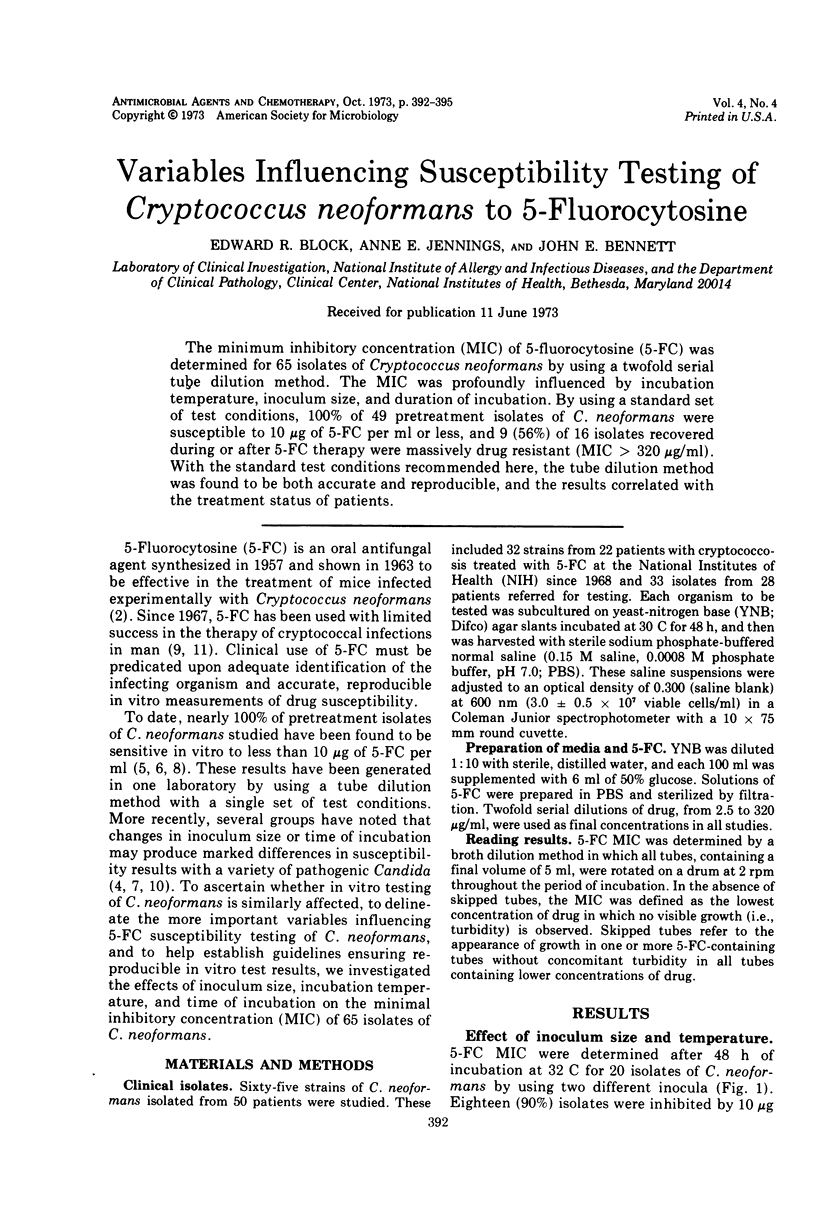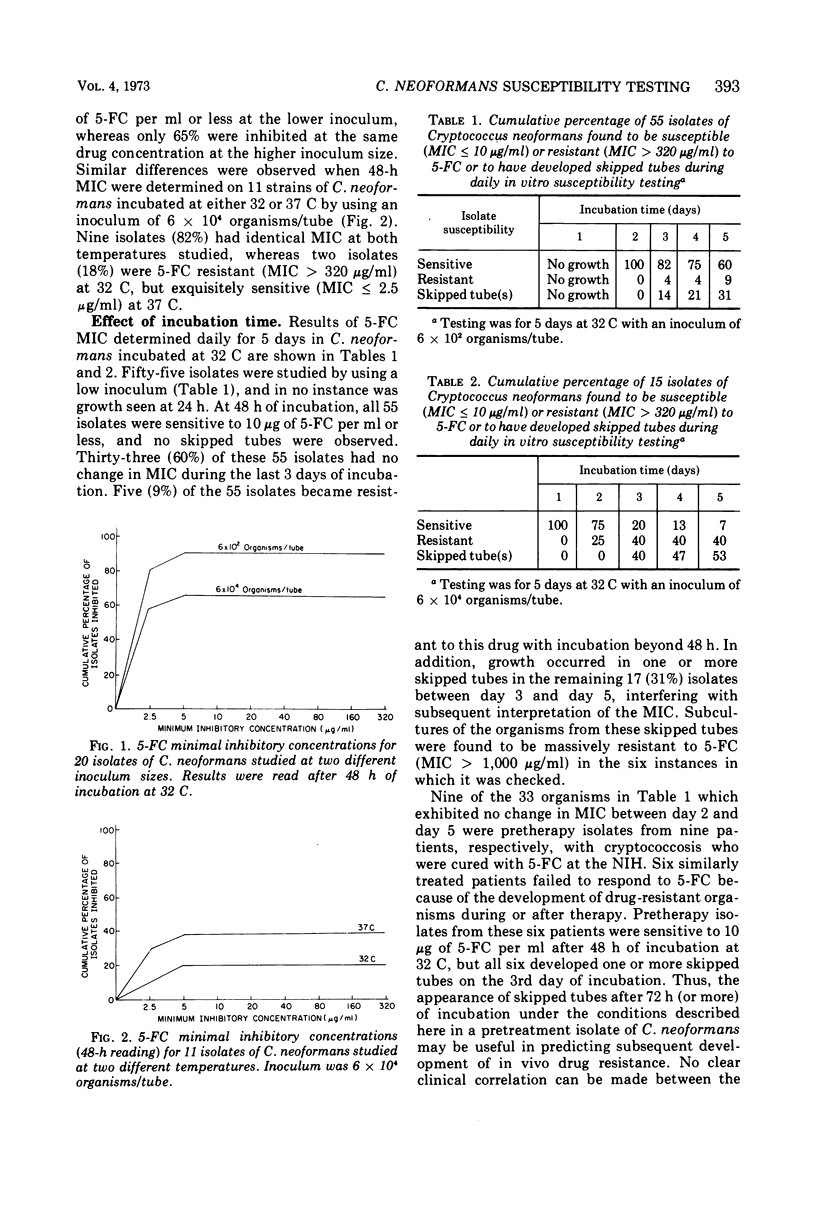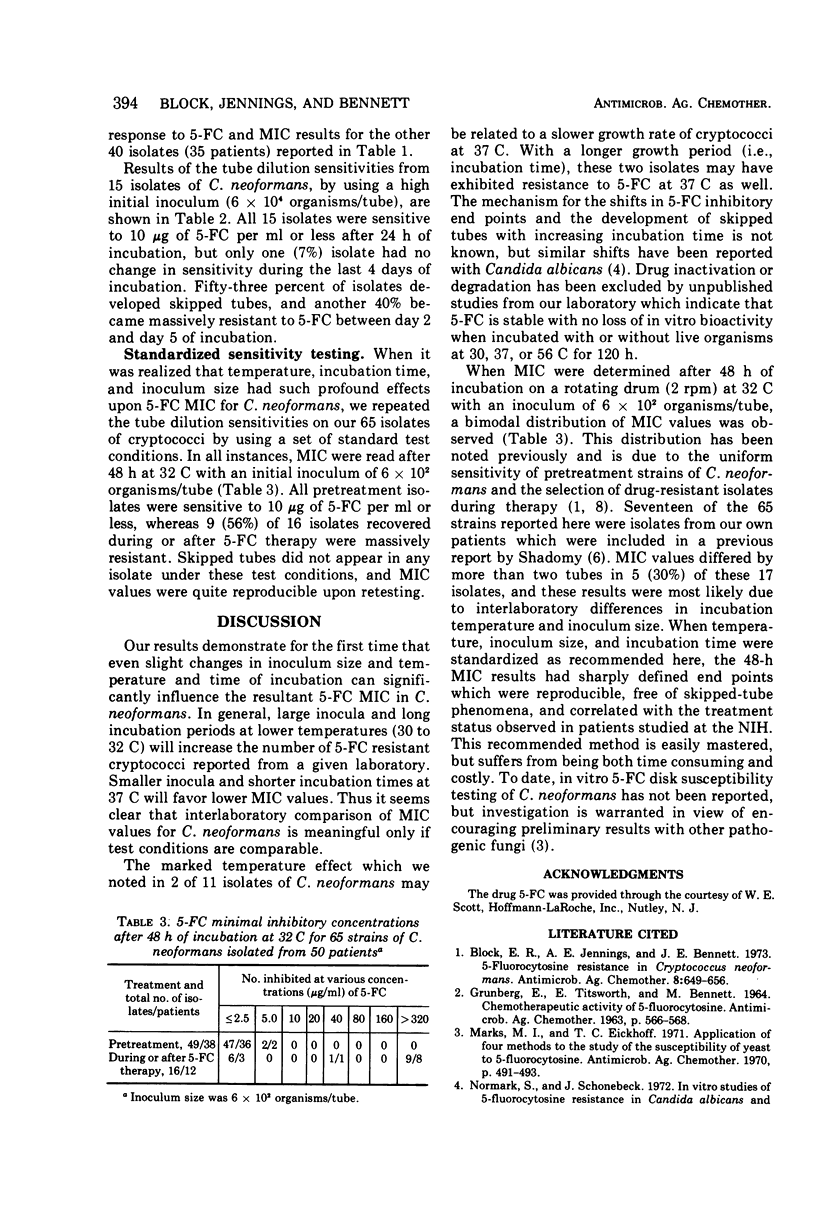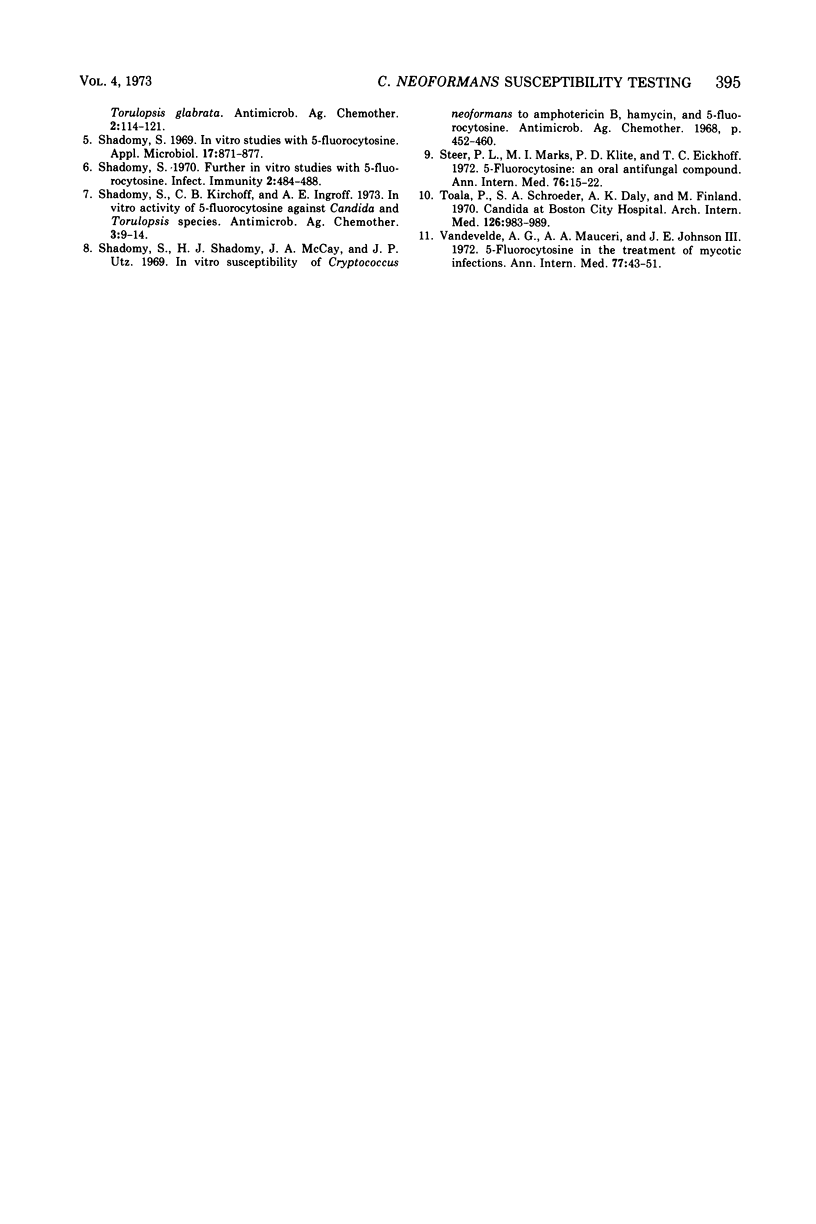Abstract
The minimum inhibitory concentration (MIC) of 5-fluorocytosine (5-FC) was determined for 65 isolates of Cryptococcus neoformans by using a twofold serial tube dilution method. The MIC was profoundly influenced by incubation temperature, inoculum size, and duration of incubation. By using a standard set of test conditions, 100% of 49 pretreatment isolates of C. neoformans were susceptible to 10 μg of 5-FC per ml or less, and 9 (56%) of 16 isolates recovered during or after 5-FC therapy were massively drug resistant (MIC > 320 μg/ml). With the standard test conditions recommended here, the tube dilution method was found to be both accurate and reproducible, and the results correlated with the treatment status of patients.
Full text
PDF



Selected References
These references are in PubMed. This may not be the complete list of references from this article.
- Block E. R., Jennings A. E., Bennett J. E. 5-fluorocytosine resistance in Cryptococcus neoformans. Antimicrob Agents Chemother. 1973 Jun;3(6):649–656. doi: 10.1128/aac.3.6.649. [DOI] [PMC free article] [PubMed] [Google Scholar]
- Marks M. I., Eickhoff T. C. Application of four methods to the study of the susceptibility of yeast to 5-fluorocytosine. Antimicrob Agents Chemother (Bethesda) 1970;10:491–493. doi: 10.1128/AAC.10.3.491. [DOI] [PubMed] [Google Scholar]
- Normark S., Schönebeck J. In vitro studies of 5-fluorocytosine resistance in Candida albicans and Torulopsis glabrata. Antimicrob Agents Chemother. 1972 Sep;2(3):114–121. doi: 10.1128/aac.2.3.114. [DOI] [PMC free article] [PubMed] [Google Scholar]
- Shadomy S. Further in vitro studies with 5-fluorocytosine. Infect Immun. 1970 Oct;2(4):484–488. doi: 10.1128/iai.2.4.484-488.1970. [DOI] [PMC free article] [PubMed] [Google Scholar]
- Shadomy S. In vitro studies with 5-fluorocytosine. Appl Microbiol. 1969 Jun;17(6):871–877. doi: 10.1128/am.17.6.871-877.1969. [DOI] [PMC free article] [PubMed] [Google Scholar]
- Shadomy S., Kirchoff C. B., Ingroff A. E. In vitro activity of 5-fluorocytosine against Candida and Torulopsis species. Antimicrob Agents Chemother. 1973 Jan;3(1):9–14. doi: 10.1128/aac.3.1.9. [DOI] [PMC free article] [PubMed] [Google Scholar]
- Shadomy S., Shadomy H. J., McCay J. A., Utz J. P. In vitro susceptibility of Cryptococcus neoformans to amphotericin B, hamycin, and 5-fluorocytosine. Antimicrob Agents Chemother (Bethesda) 1968;8:452–460. [PubMed] [Google Scholar]
- Steer P. L., Marks M. I., Klite P. D., Eickhoff T. C. 5-fluorocytosine: an oral antifungal compound. A report on clinical and laboratory experience. Ann Intern Med. 1972 Jan;76(1):15–22. doi: 10.7326/0003-4819-76-1-15. [DOI] [PubMed] [Google Scholar]
- Toala P., Schroeder S. A., Daly A. K., Finland M. Candida at Boston City Hospital. Clinical and epidemiological characteristics and susceptibility to eight antimicrobial agents. Arch Intern Med. 1970 Dec;126(6):983–989. doi: 10.1001/archinte.126.6.983. [DOI] [PubMed] [Google Scholar]
- Vandevelde A. G., Mauceri A. A., Johnson J. E., 3rd 5-fluorocytosine in the treatment of mycotic infections. Ann Intern Med. 1972 Jul;77(1):43–51. doi: 10.7326/0003-4819-77-1-43. [DOI] [PubMed] [Google Scholar]


